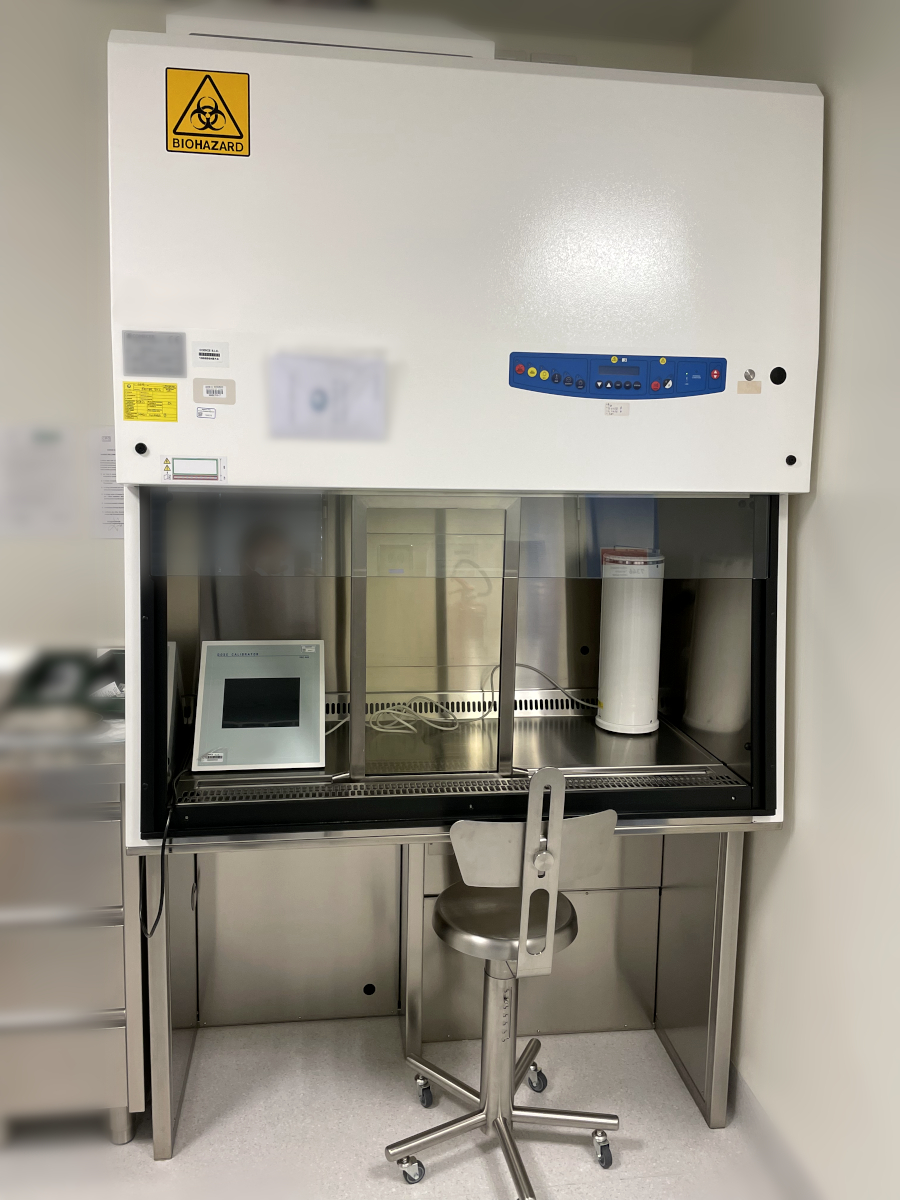
Alternative names
Positive Pressure Laminar Flow cabinet, class II; Laminar Airflow cabinet
Primary use
Type of medical device or related product
Multiple vs. specific use (health condition)
Intended population sex
Level of technical knowledge
Capital
Reusable
Requirements
air conditioning / temperature control
electricity (mains)
waste disposal
WHO list of priority medical devices
Service delivery platforms / Healthcare levels
Healthcare unit
EMDN related code(s)
W020703
BIOLOGICAL HOODS AND CABINETS
The code(s) and term(s) in this section were observed and retrieved from public databases and have not been validated by health regulatory authorities.
Please consult your regulatory agency and EMDN site:
https://webgate.ec.europa.eu/dyna2/emdn
GMDN related code(s)
40522
Laminar airflow hood (A ventilated laboratory enclosure designed to prevent airborne biological contamination of laboratory specimens contained within, and personnel handling the specimen, by creating a barrier with a forced flow of uniform-velocity and parallel-direction air. It is typically a plastic/metallic cabinet-like structure with an open front for product handling and a sash to regulate the opening. Air is typically drawn from the environment into the system by negative pressure created by a line-powered blower; air particles and liquid droplets are removed usually using high-efficiency particulate air (HEPA) filters. Contaminated air is usually exhausted to the outside; also known as an LAF bench.)
The medical device term(s), code(s) and definition(s) in this section were retrieved from databases external to WHO.
As there might be more than one name, definition and “Nomenclature Code” related to the specific medical device, please consult
https://gmdnagency.org
GMDN ®. © GMDN Agency 2005-2025
WHO related resources
http://apps.who.int/iris/bitstream/10665/205033/1/9789241510349_eng.pdf
https://apps.who.int/iris/bitstream/handle/10665/75206/9789241593877_eng.pdf;sequence=1
http://apps.who.int/iris/bitstream/10665/75971/1/9789241504522_eng.pdf
https://apps.who.int/iris/handle/10665/204960
http://whqlibdoc.who.int/publications/2011/9789241501125_eng.pdf
https://www.who.int/ihr/publications/lqms_en.pdf
http://apps.who.int/iris/bitstream/10665/204266/1/9789241549394_eng.pdf
http://whqlibdoc.who.int/publications/2010/9789241599412_eng.pdf
http://whqlibdoc.who.int/publications/2008/9789241596350_eng_low.pdf
http://whqlibdoc.who.int/publications/2005/9241593563_eng.pdf
http://apps.who.int/iris/bitstream/10665/204834/1/B3217.pdf
http://whqlibdoc.who.int/publications/2003/9241545453.pdf
http://whqlibdoc.who.int/publications/2003/9241545305.pdf
http://apps.who.int/iris/bitstream/10665/164358/1/9789241598057_eng.pdf
https://www.who.int/health-topics/diagnostics#tab=tab_1
WHO resources on medical devices
Interagency list of priority medical devices for essential interventions for reproductive, maternal, newborn and child health
WHO list of priority medical devices for cancer management
WHO List of Priority Medical Devices for management of cardiovascular diseases and diabetes
WHO List of Priority medical devices list for the COVID-19 response and associated technical specifications
Package of eye care interventions
Trauma and Emergency Surgery Kit (TESK) 2019
WHO medical devices website
WHO priority medical devices website
WHO essential in vitro diagnostic website


